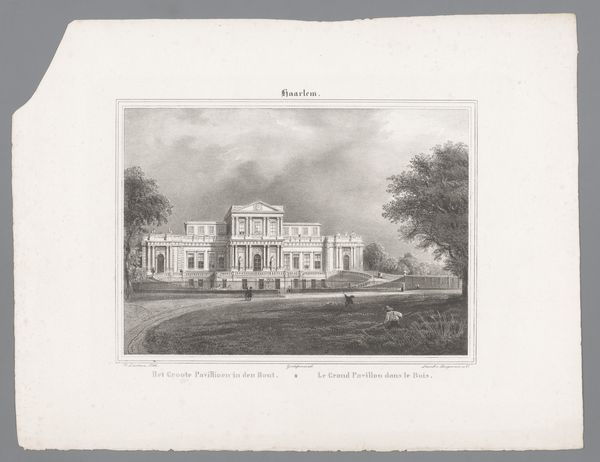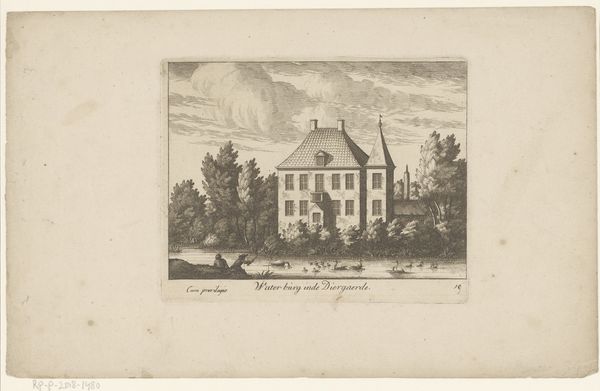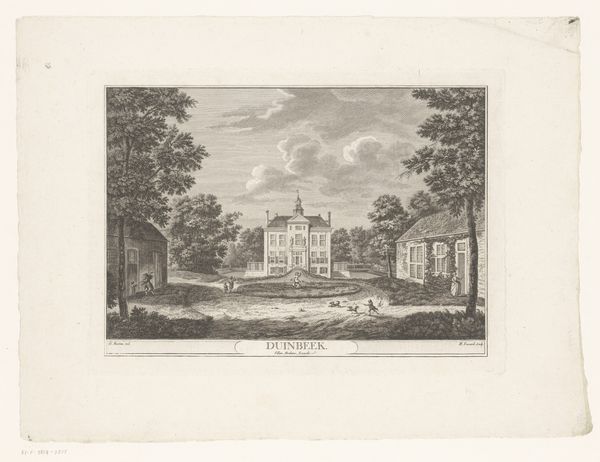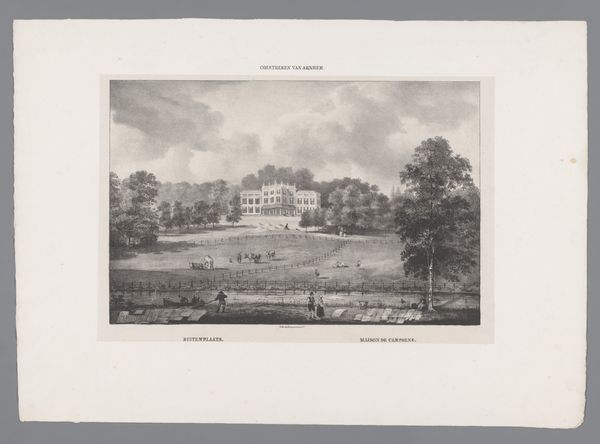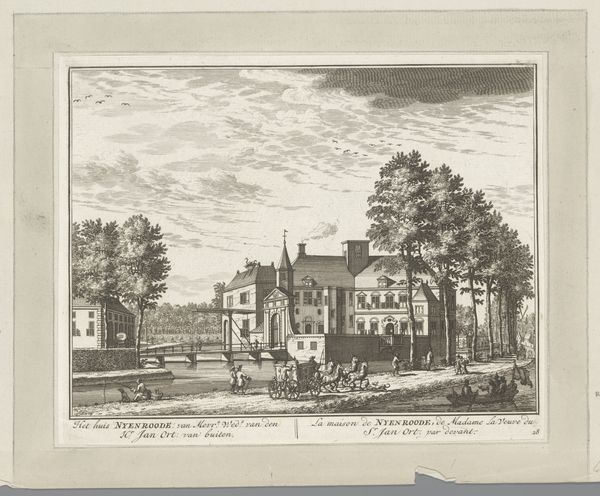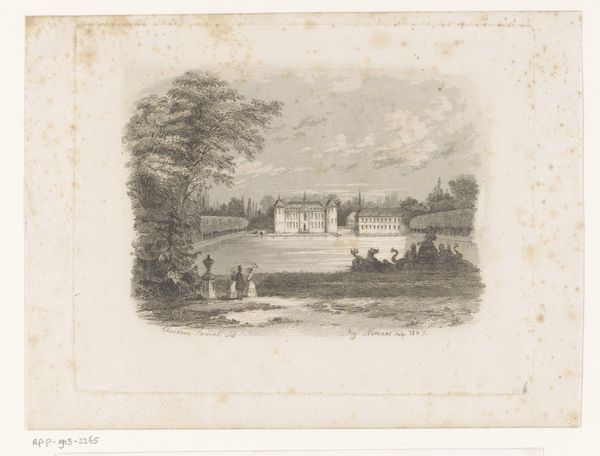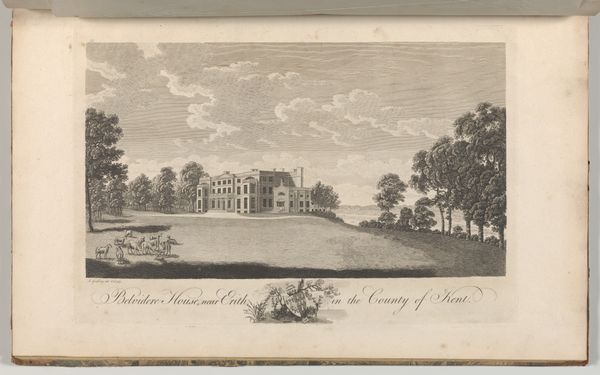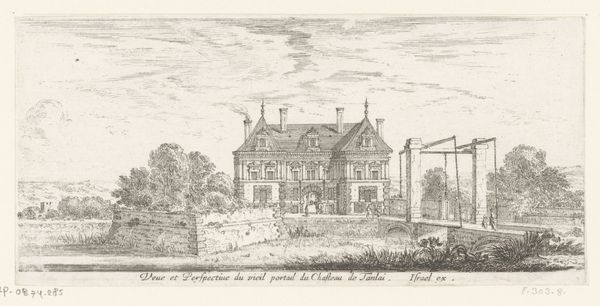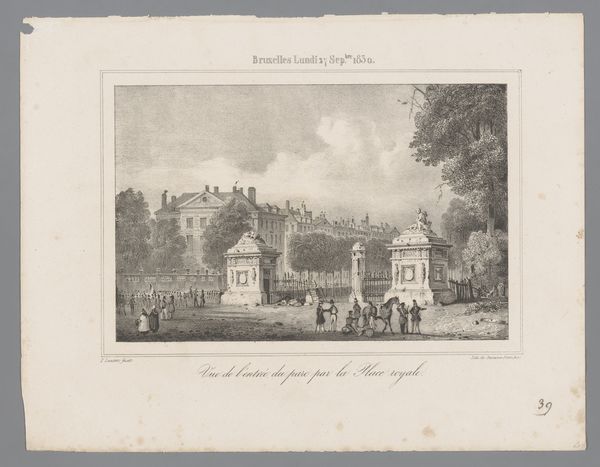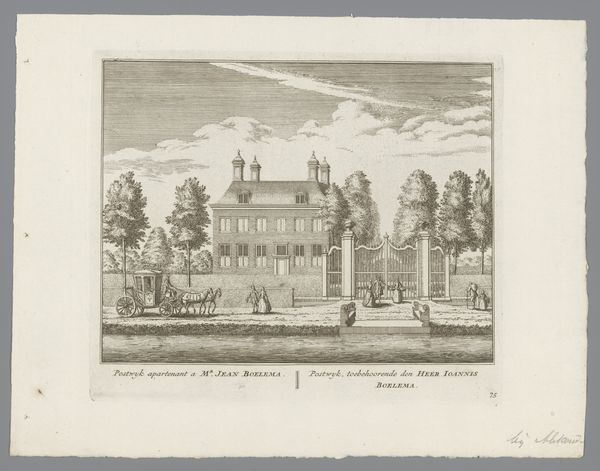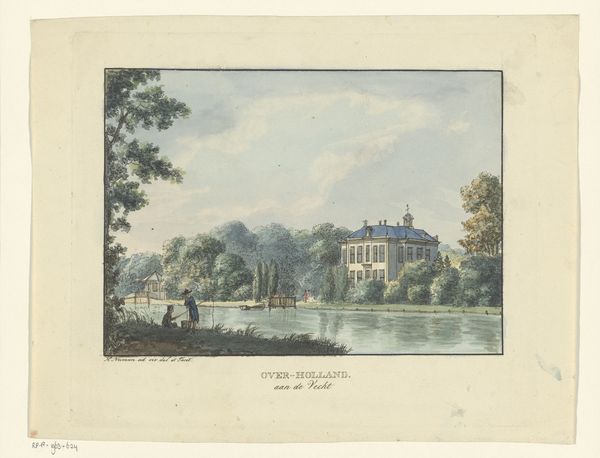
print, engraving
#
neoclacissism
# print
#
landscape
#
historical photography
#
romanticism
#
cityscape
#
engraving
Dimensions: height 123 mm, width 183 mm
Copyright: Rijks Museum: Open Domain
Curator: John Hassell’s engraving, "Gezicht op Woodlands House te Greenwich," dating back to 1804, presents us with a quintessential English landscape. Editor: It's quite striking, this print. The soft grey tones create an atmosphere of serenity, almost melancholic. There's such an idealized stillness to the scene, almost frozen in time. Curator: Hassell created this engraving during a fascinating period in British history, deeply entrenched in notions of property, class, and landscape as a form of social theatre. Engravings like this were circulated widely, solidifying an idea of British identity that privileged the landed gentry. It became a form of aspirational propaganda, in a way. Editor: The house itself seems like a monument to this social order. Its architecture whispers of neoclassical ideals, reinforcing an image of rationality and control amidst nature. But the scale is also intimidating— a stark reminder of social divisions. What about the carriage? Is it a stage prop enhancing that theatre? Curator: Absolutely. The inclusion of the carriage adds another layer of narrative, indicating movement and privilege, the easy access the residents would have had to both city and countryside, the networks they inhabited. The picturesque isn't just about aesthetics here. It's a coded message. Editor: So it’s projecting power, not just beauty? Considering the socio-economic realities of the time, this idyllic vision feels increasingly loaded. This wasn’t the reality for most, was it? It seems almost a political statement wrapped in pastoral charm. Curator: Precisely! Hassell was very aware of the patrons and the market for these kinds of images. The piece also captures the tensions inherent in Neoclassicism's appeal to rationality while engaging Romanticism's emphasis on emotional response to nature. He is showing you the world as his clients wanted to see it, maybe at the expense of fully representing the true political dynamics in play. Editor: It leaves you with a disquieting feeling, doesn’t it? Such calculated composition. The shadows almost seem to hide more than they reveal. Hassell provides an image of grand tranquility—but the careful artificiality demands further questioning of whose peace it really represents. Curator: Indeed, its seemingly calm surface invites a more critical examination of the societal power structures at play. Editor: An image to unsettle the peace of complacency.
Comments
No comments
Be the first to comment and join the conversation on the ultimate creative platform.
